- Home
- Stephen King
Danse Macabre Page 32
Danse Macabre Read online
Page 32
"Okay, let's try again," he said. "What are you?"
For the first time since he had taken her into the car, she really smiled. It was a transformation, but not of a kind to make him feel easier; she did not look any less adult. "You know," she said.
He insisted. "What are you?"
She smiled all through her amazing response. "I am you."
"No. I am me. You are you."
"I am you."
Ghost Story is at first glance an extravagant mishmash of every horror and gothic convention ever yarned in all those B-pictures we've just finished talking about. There are animal mutilations. There's demon possession (Gregory Bate, a secondary villain, battens upon his younger sister, who escapes, and his younger brother . . . who doesn't. There's vampirism, ghoulishness (in the literal sense of the word; Gregory dines on his victims after they're dead), and werewolvery of a most singular and frightening sort. Yet all of these fearsome legends are really only the outer shell of the novel's real heart, where there stands a woman who may be Eva Galli . . . or Alma Mobley . . . or Anna Mostyn . . . or possibly a little girl in a dirty pink dress whose name, supposedly, is Angie Maule. What are you? Don asks. I am you, she responds. And that is where the heartbeat of this extraordinary book seems the strongest. What is the ghost, after all, that it should frighten us so, but our own face? When we observe it we become like Narcissus, who was so struck by the beauty of his own reflection that he lost his life. We fear the Ghost for much the same reason we fear the Werewolf: it is the deep part of us that need not be bound by piffling Apollonian restrictions. It can walk through walls, disappear, speak in the voices of strangers. It is the Dionysian part of us . . . but it is still us.
Straub seems aware that he is carrying a basket dangerously overloaded with horrors, and turns the fact splendidly to his own advantage. The characters themselves feel that they have entered a horror story; the protagonist, Don Wanderley, is a writer of horror stories, and within the town of Milburn, New York, which becomes the world of this novel, there is the smaller world of Clark Mulligan's Rialto Theater, which is showing a horror-movie festival during the book's progress: a microcosm within the macrocosm. In one of the book's key scenes Gregory Bate throws one of the book's good guys, young Peter Barnes, through the movie screen while Night of the Living Dead is showing in the empty theater. The town of Milburn has become snowed in and overrun with the living dead, and at this point Barnes is literally thrown into the movie. It shouldn't work; it should be overt and cute. But Straub's firm prose makes it work. It preserves Straub's hall-of-mirrors approach (three of the book's epigrams are Straub's own free rendering of the Narcissus story), which keeps us constantly aware that the face looking out of all those mirrors is also the face looking in; the book suggests we need ghost stories because we, in fact, are the ghosts.2 Is this really such a difficult or paradoxical idea when you consider how short our lives are in a wider life-scheme where redwoods live two thousand years and the Galapagos sea turtles may live for a thousand?
Most of Ghost Story's power comes from the fact that of the four archetypes we have discussed, the Ghost is the most potent. The concept of the Ghost is to the good novel of the supernatural what the concept of the Mississippi is to Twain's Huckleberry Finn--really more than symbol or archetype, it is a major part of that myth-pool in which we all must bathe. "Don't you want to hear about the manifestations of the different spirits in her?" the younger priest asks the older before they go up to Regan MacNeil before the final confrontation in The Exorcist. He begins to enumerate them, and Father Merrin cuts him off curtly: "There is only one."
And although Ghost Story clanks and roars with the trappings of vampirism and werewolvery and flesh-eating ghouls, there is really only Alma/Anna/Ann-Veronica . . . and little Angie Maule. She is described by Don Wanderley as a shape-changer (what the Indians called a manitou), but even this is a branch rather than the taproot; all of these manifestations are like the up cards in a hand of stud poker. When we turn over the hole card, the one that makes the hand, we find the central card of our Tarot hand: the Ghost.
We know that ghosts aren't inherently evil--in fact, most of us have heard or read of a case or cases where ghosts have been rather helpful; the shade who told Auntie Clarissa not to take that plane or who warned Grampy Vic to go home fast because the house was catching on fire. My mother told me that after suffering a near-fatal heart attack, a close friend of hers had a visit from Jesus Christ in his hospital room. Jesus just opened the door of Emil's I.C. room and asked him how he was doing. Emil allowed as how he was afraid he was a goner, and asked Jesus if He had come to take him. "Not yet," Jesus said, leaning casually against the door. "You've got another six years in you. Relax." He then left. Emil recovered. That was in 1953; I heard the story from my mother around 1957. Emil died in 1959--six years after his heart attack.
I have even had some truckle with "good ghosts" in my own work; near the end of The Stand, Nick Andros, a character who has been killed earlier in an explosion, returns to tell halfwitted but good-hearted Tom Cullen bow to care for the novel's hero, Stu Redman, after Stu has fallen gravely ill with pneumonia. But for the purposes of the horror novel the ghosts must be evil, and as a result we find ourselves back in a familiar place: examining the Apollonian/Dionysian conflict and watching for the mutant.
In Ghost Story, Don Wanderley is summoned by four old men who call themselves the Chowder Society. Don's uncle, the fifth member, died of an apparent heart attack the year before while attending a party thrown for the mysterious actress Ann-Veronica Moore. As with all good gothics, a summary of the plot beyond this basic situation would be unfair--not because the veteran reader of this material will find much that is new in the plot (it would be surprising if he, she, or we did, in light of Straub's intention to fuse as many of the classic ghost story elements as possible), but because a bare summary of any gothic makes the book look absurdly complex and labored. Most gothics are overplotted novels whose success or failure hinges on the author's ability to make you believe in the characters and partake of the mood. Straub succeeds winningly at this, and the novel's machinery runs well (although it is extremely loud machinery; as already pointed out, that is also one of the great attractions of the gothic--it's PRETTY GODDAM LOUD!). The writing itself is beautifully tuned and balanced.
The bare situation is enough to delineate the conflict in Ghost Story; in its way it is as clearly a conflict between the Apollonian and Dionysian as Stevenson's Dr. Jekyll and Mr. Hyde, and its moral stance, like that of most horror fiction, is firmly reactionary. Its politics are the politics of the four old men who make up the Chowder Society--Sears James and John Jaffrey are staunch Republicans, Lewis Benedikt owns what amounts to a medieval fiefdom in the woods, and while we are told that Ricky Hawthorne was at one time a socialist, he may be the only socialist in history who is so entranced by new ties that he feels an urge, we are told, to wear them to bed. All of these men--as well as Don Wanderley and young Peter Barnes--are perceived by Straub as beings of courage and love and generosity (and as Straub himself has pointed out in a later letter to me, none of these qualities run counter to the idea of reactionism; in fact, they may well define it). In contrast, the female revenant (all of Straub's evil ghosts are female) is cold and destructive, living only for revenge. When Don makes love to this creature in its Alma Mobley incarnation, he touches her in the night and feels "a shock of concentrated feeling, a shock of revulsion--as though I had touched a slug." And during a weekend spent with her, Don wakes up and sees Alma standing at the window and looking blankly out at the fog. He asks her if anything is wrong, and she replies. At first he persuades himself that her reply has been "I saw a ghost." A later truth forces him to admit she may have said "I am a ghost." A final act of memory retrieval convinces him that she has said something far more telling: "You are a ghost."
The battle for Milburn, New York--and for the lives of the last three members of the Chowder Society--commences. The lines are cl
early and simply drawn for all the complexities of plot and the novel's shifting voices. We have three old men, one young man, and one teenage boy watching for the mutant. The mutant arrives. In the end, a victor emerges. This is standard enough stuff. What distinguishes it--what "brings it up"--is Straub's mirroring effect. Which Alma is the real Alma? Which evil is the real evil? As previously noted, it is usually easy to divide horror novels in another way--those that deal with "inside evil" (as in Dr. Jekyll and Mr. Hyde) and those that deal with "outside" or predestinate evil (as in Dracula). But occasionally a book comes along where it is impossible to discover exactly where that line is. The Haunting of Hill House is such a book; Ghost Story is another. A great many writers who have attempted the horror story have also realized that it is exactly this blurring about where the evil is coming from that differentiates the good or the merely effective from the great, but realization and execution are two different things, and in attempting to produce the paradox, most succeed only in producing a muddle. . . . Lovers Living, Lovers Dead by Richard Lutz is one example. This is a case where you either hit the target dead-bang or miss it altogether. Straub hits it.
"I really wanted to expand things much more than I ever had before," Straub says. "I wanted to work on a large canvas. 'Salem's Lot showed me how to do this without getting lost among a lot of minor characters. Besides the large canvas, I also wanted a certain largeness of effect. . . . I had been imbued with the notion that horror stories are best when they are ambiguous and low key and restrained. Reading ['Salem's Lot], I realized that idea was self-defeating. Horror stories were best when they were big and gaudy, when the natural operative quality in them was let loose. So part of the 'expansion' was an expansion of effect--I wanted to work up to big climaxes, create more tension than I ever had, build in big big scares. What all this means is that my ambition was geared up very high. Very much on my mind was doing something which would be very literary, and at the same time take on every kind of ghost situation I could think of. Also I wanted to play around with reality, to make the characters confused about what was actually real. So: I built in situations in which they feel they are 1.) acting out roles in a book; 2.) watching a film; 3.) hallucinating; 4.) dreaming; 5.) transported into a private fantasy.3 This kind of thing, I think, is what our kind of book can do very well, what it is naturally suited to do. The material is sort of naturally absurd and unbelievable, and therefore suits a narrative in which the characters are bounced around a whole set of situations, some of which they know rationally to be false. And it seemed fitting to me that this kind of plot would emerge from a group of men telling stories--it was self-referring, which always pleases me very deeply in novels. If the structure had a relationship to the events, the book has more resonance."
He offers a final anecdote about writing the book: "There was one very happy accident. . . . Just when I was going to start the second part, two Jehovah's Witnesses showed up on the doorstep, and I bought three or four pamphlets from them. One . . . had a headline about Dr. Rabbitfoot--this was for a story written by a trombonist named Trummy Young, who once played with Louis Armstrong. Dr. Rabbitfoot was a minstrel trombonist he saw as a child. So I immediately fastened on the name, and started Book Two with the character."
In the course of the novel, young Peter Barnes is picked up either by Alma Mobley or another so-called "nightwatcher" while hitching a ride. In this shape, the supernatural creature is a small, tubby man in a blue car--a Jehovah's Witness. He gives Peter a copy of The Watchtower, which is forgotten by the reader in the explosive course of events over the next forty pages or so. Straub has not forgotten, though. Later, after telling his story to Don Wanderley, Peter is able to produce the pamphlet the Jehovah's Witness has given him. The headline reads: DR. RABBITFOOT LED ME TO SIN.
One wonders if this was the headline of the actual copy of The Watchtower which the Jehovah's Witness sold to Straub in his London home as he worked out the first draft of Ghost Story.
3
Let us move now from ghosts to the natural (or unnatural, if you prefer) habitat of ghosts: the haunted house. There are haunted-house stories beyond numbering, most of them not very good (The Cellar, by Richard Laymon, is one example of the less successful breed). But this little subgenre has also produced a number of excellent books.
I'll not credit the haunted house as a genuine card in the Tarot hand of the supernatural myth, but I will suggest that we might widen our field of enquiry a bit and find that we have discovered another of those springs which feed the myth-pool. For want of a better name, we might call this particular archetype the Bad Place, a term which encompasses much more than the fallen-down house at the end of Maple Street with the weedy lawn, the broken windows, and the moldering FOR SALE sign.
It is neither my purpose nor my place here to discuss my own work, but readers of it will know that I've dealt with the archetype of the Bad Place at least twice, once obliquely (in 'Salem's Lot) and once directly (in The Shining). My interest in the subject began when a friend and I took it into our heads to explore the local "haunted house"--a decrepit manse on the Deep Cut Road in my hometown of Durham, Maine. This place, in the manner of deserted dwellings, was called after the name of the last residents. So in town it was just the Marsten House.
This ramshackle abode stood on a hill high enough to overlook a good part of our section of town--a section known as Methodist Corners. It was full of fascinating junk--medicine bottles with no labels which still had odd and vile-smelling liquids in them, stacks of moldy magazines (JAPS COME OUT OF THEIR RAT-HOLES ON IWO! proclaimed the blurb on one yellowed issue of Argosy), a piano with at least twenty-five dead keys, paintings of long-dead people whose eyes seemed to follow you, rusty silverware, a few pieces of furniture.
The door was locked and there was a NO TRESPASSING sign nailed to it (so old and faded it was barely legible), but this did not stop us; such signs rarely stop self-respecting ten-year-olds. We simply went in through an unlocked window.
After having explored the downstairs thoroughly (and ascertained to our satisfaction that the old-fashioned sulphur matches we had found in the kitchen would no longer light but only produce a foul smell), we went upstairs. Unknown to us, my brother and cousin, two and four years older than my friend and I, had crept in after us. As the two of us poked through the upstairs bedrooms, they began to play horrible, jagged chords on the piano down in the living room.
My buddy and I screamed and clutched each other--for a moment the terror was complete. Then we heard those two dorks laughing downstairs and we grinned at each other shamefacedly. Nothing really of which to be afraid; just a couple of older boys scaring the old Irish bejaysus out of a couple of younger ones. No, nothing really of which to be afraid, but I don't recall that we ever returned there. Certainly not after dark. There might have been . . . things. And that was not even a really Bad Place.
Years later I read a speculative article which suggested that so-called "haunted houses" might actually be psychic batteries, absorbing the emotions that had been spent there, absorbing them much as a car battery will store an electric charge. Thus, the article went on, the psychic phenomena we call "hauntings" might really be a kind of paranormal movie show--the broadcasting back of old voices and images which might be parts of old events. And the fact that many haunted houses are shunned and get the reputation of being Bad Places might be due to the fact that the strongest emotions are the primitive ones--rage and hate and fear.
I did not accept the ideas in this article as gospel truth--it seems to me that the writer who deals with psychic phenomena in his or her fiction has a responsibility to deal with such phenomena respectfully but not in a state of utter, worshipful belief--but I did find the idea interesting, both for the idea itself and because it suggested a vague but intriguing referent in my own experience: that the past is a ghost which haunts our present lives constantly. And with my rigorous Methodist upbringing, I began to wonder if the haunted house could not be turned into a k
ind of symbol of unexpiated sin . . . an idea which turned out to be pivotal in the novel The Shining.
I guess I liked the idea itself--as divorced from any symbolism or moral reference--because it's always been difficult for me to understand why the dead would want to hang around old deserted houses, clanking chains and groaning spectrally to frighten the passersby . . . if they could go elsewhere. It sounds like a drag to me. The theory suggested that the inhabitants might indeed have gone on, leaving only a psychic residue behind. But even so (as Kenneth Patchen says), that did not rule out the possibility that the residue might be extremely harmful, as lead-based paint can be harmful to children who eat flakes of it years after it has been applied.
My experience in the Marsten House with my friend crosspatched with this article and with a third element--teaching Stoker's Dracula--to create the fictional Marsten House, which stands overlooking the little town of Jerusalem's Lot from its eminence not far from the Harmony Hill Cemetery. But 'Salem's Lot is a book about vampires, not hauntings; the Marsten House is really only a curlicue, the gothic equivalent of an appendix. It was there, but it wasn't doing much except lending atmosphere (it becomes a little more important in Tobe Hooper's TV-film version, but its major function still seems to be to stand up there on that hill and look broody). So I went back to the house-as-psychic-battery idea and tried to write a story in which that concept would take center stage. The Shining is set in the apotheosis of the Bad Place: not a haunted house but a haunted hotel, with a different "real" horror movie playing in almost every one of its guest rooms and suites.
I needn't point out that the list of possible Bad Places does not begin with haunted houses and end with haunted hotels; there have been horror stories written about haunted railroad stations, automobiles, meadows, office buildings. The list is endless, and probably all of it goes back to the caveman who had to move out of his hole in the rock because he heard what sounded like voices back there in the shadows. Whether they were actual voices or the voices of the wind is a question we still ask ourselves on dark nights.

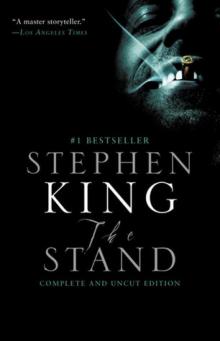 The Stand
The Stand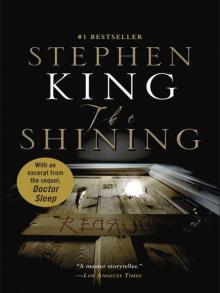 The Shining
The Shining It
It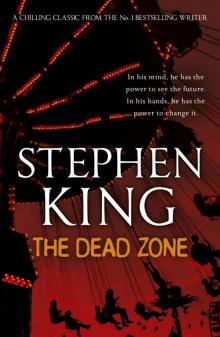 The Dead Zone
The Dead Zone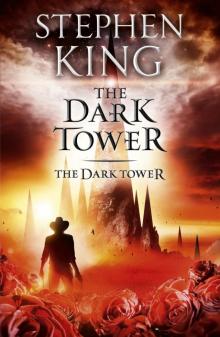 The Dark Tower
The Dark Tower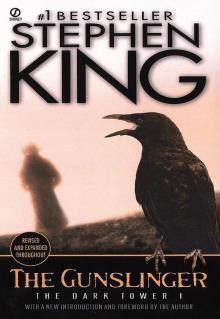 The Gunslinger
The Gunslinger Song of Susannah
Song of Susannah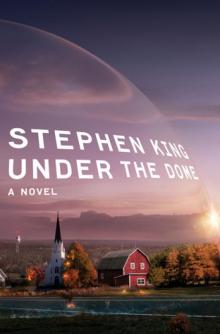 Under the Dome
Under the Dome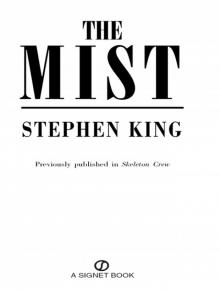 The Mist
The Mist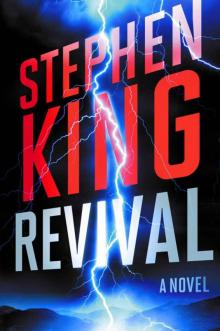 Revival
Revival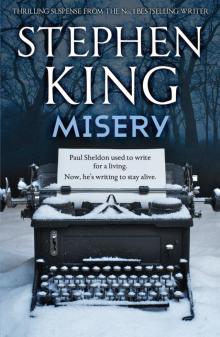 Misery
Misery Mile 81
Mile 81 From a Buick 8
From a Buick 8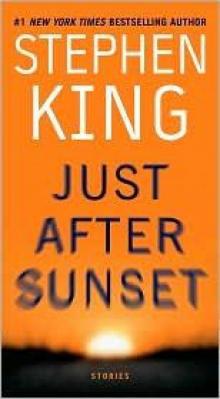 Just After Sunset
Just After Sunset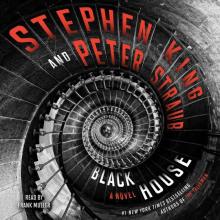 Black House
Black House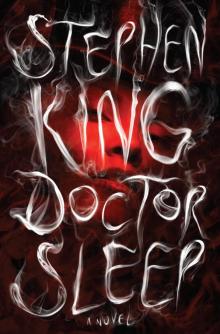 Doctor Sleep
Doctor Sleep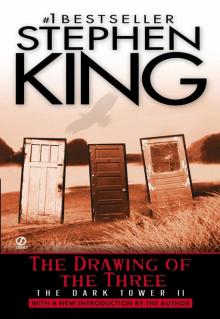 The Drawing of the Three
The Drawing of the Three Wizard and Glass
Wizard and Glass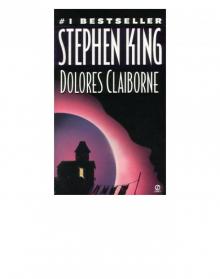 Dolores Claiborne
Dolores Claiborne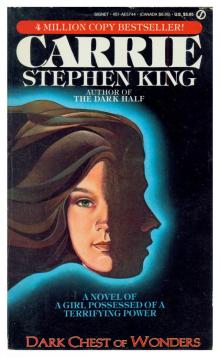 Carrie
Carrie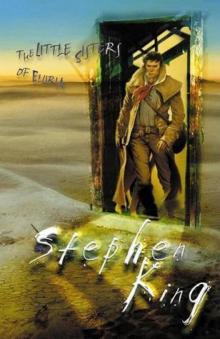 The Little Sisters of Eluria
The Little Sisters of Eluria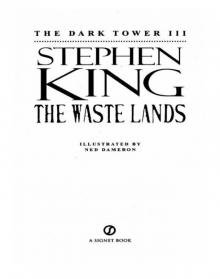 The Waste Lands
The Waste Lands The Green Mile
The Green Mile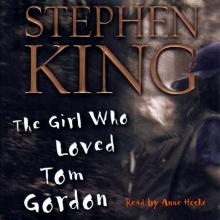 The Girl Who Loved Tom Gordon
The Girl Who Loved Tom Gordon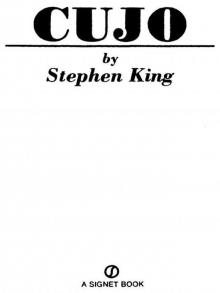 Cujo
Cujo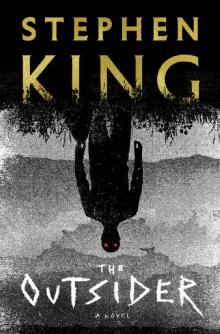 The Outsider_A Novel
The Outsider_A Novel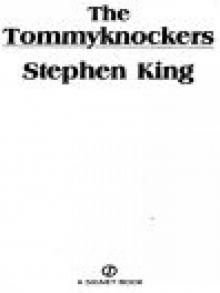 The Tommyknockers
The Tommyknockers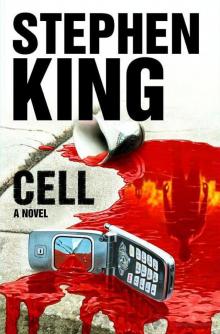 Cell
Cell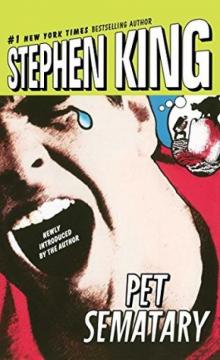 Pet Sematary
Pet Sematary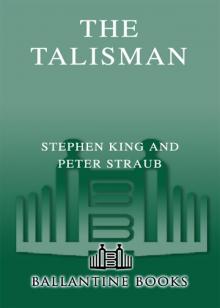 The Talisman
The Talisman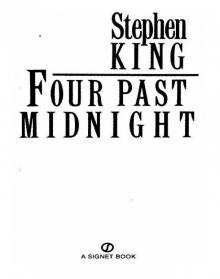 Four Past Midnight
Four Past Midnight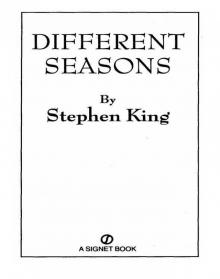 Different Seasons
Different Seasons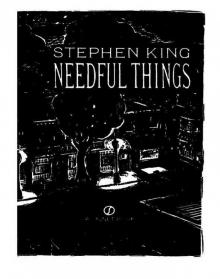 Needful Things
Needful Things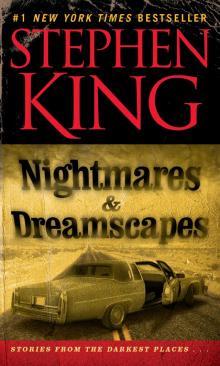 Nightmares and Dreamscapes
Nightmares and Dreamscapes Christine
Christine The Running Man
The Running Man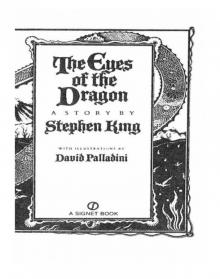 The Eyes of the Dragon
The Eyes of the Dragon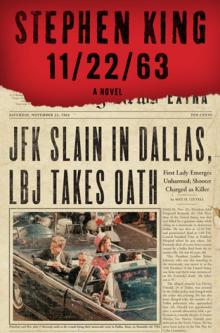 11/22/63
11/22/63 Firestarter
Firestarter Insomnia
Insomnia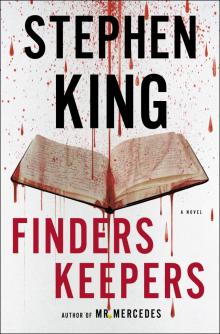 Finders Keepers
Finders Keepers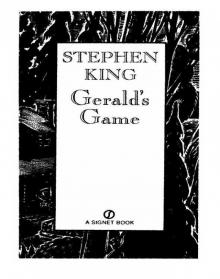 Gerald's Game
Gerald's Game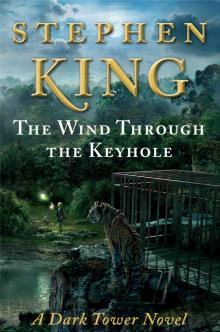 The Wind Through the Keyhole
The Wind Through the Keyhole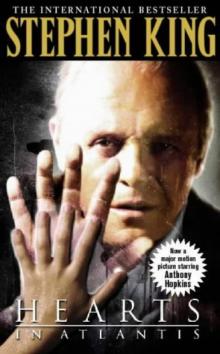 Hearts in Atlantis
Hearts in Atlantis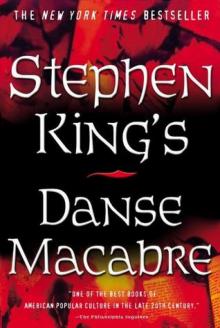 Danse Macabre
Danse Macabre Thinner
Thinner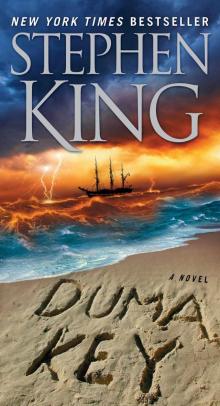 Duma Key
Duma Key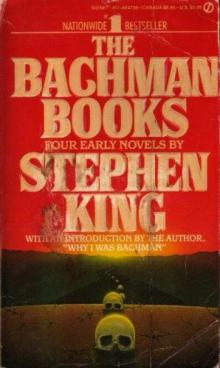 The Bachman Books
The Bachman Books Skeleton Crew
Skeleton Crew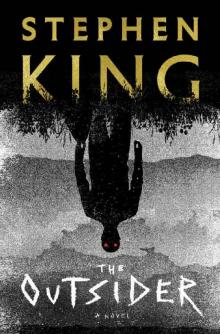 The Outsider-Stephen King
The Outsider-Stephen King Full Dark, No Stars
Full Dark, No Stars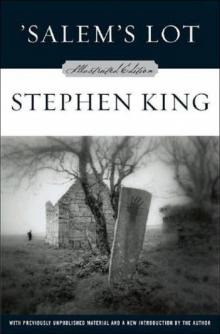 Salem's Lot
Salem's Lot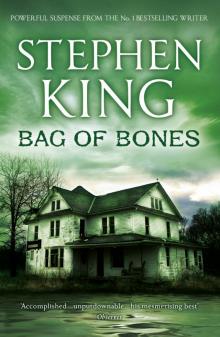 Bag of Bones
Bag of Bones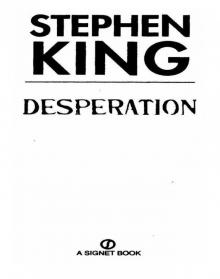 Desperation
Desperation End of Watch
End of Watch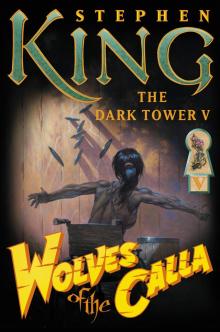 Wolves of the Calla
Wolves of the Calla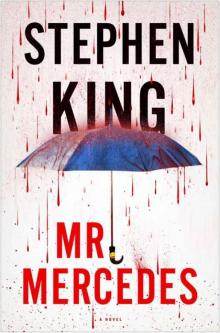 Mr. Mercedes
Mr. Mercedes Billy Summers
Billy Summers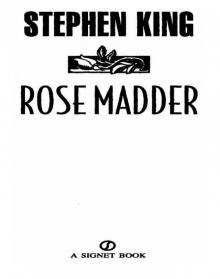 Rose Madder
Rose Madder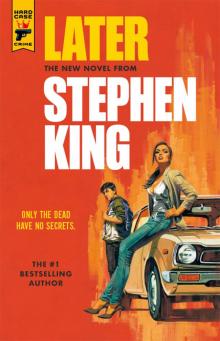 Later
Later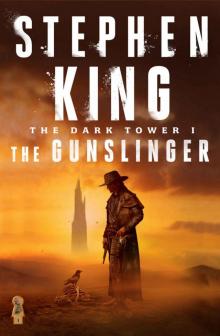 Gunslinger
Gunslinger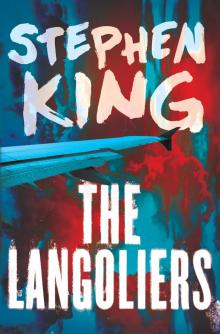 The Langoliers
The Langoliers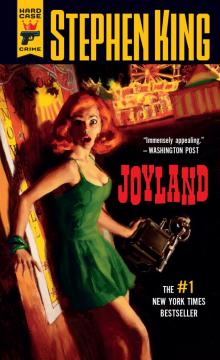 Joyland
Joyland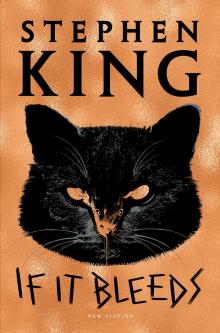 If It Bleeds
If It Bleeds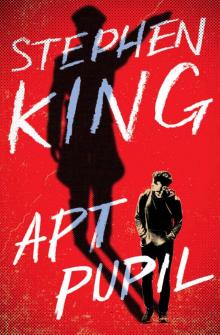 Apt Pupil (Scribner Edition)
Apt Pupil (Scribner Edition)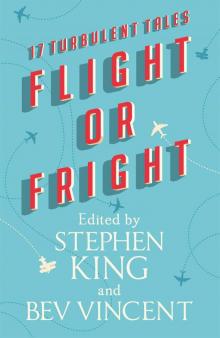 Flight or Fright
Flight or Fright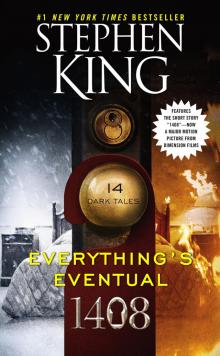 Everything's Eventual: 14 Dark Tales
Everything's Eventual: 14 Dark Tales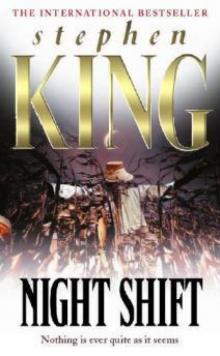 Night Shift
Night Shift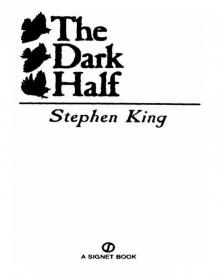 The Dark Half
The Dark Half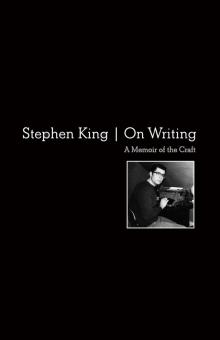 On Writing
On Writing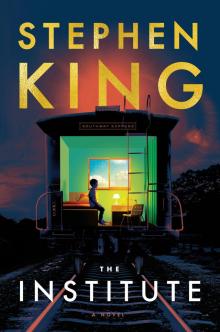 The Institute
The Institute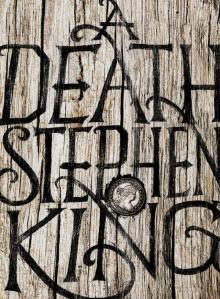 A Death
A Death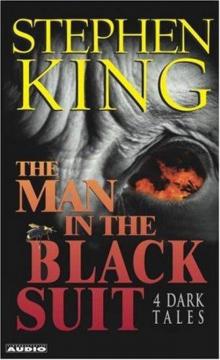 The Man in the Black Suit : 4 Dark Tales
The Man in the Black Suit : 4 Dark Tales Bullet
Bullet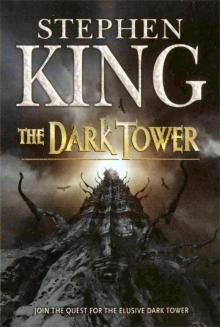 The Dark Tower tdt-7
The Dark Tower tdt-7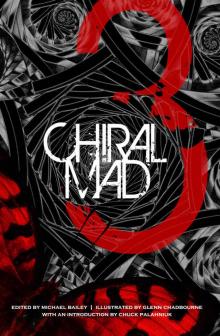 Chiral Mad 3
Chiral Mad 3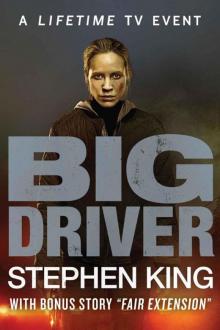 Big Driver
Big Driver Stephen King: The Green Mile
Stephen King: The Green Mile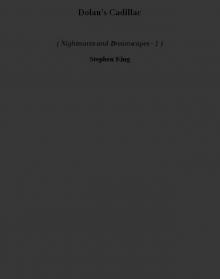 Dolan's Cadillac nad-1
Dolan's Cadillac nad-1 Head Down nad-22
Head Down nad-22 The Doctor's Case
The Doctor's Case Luckey Quarter
Luckey Quarter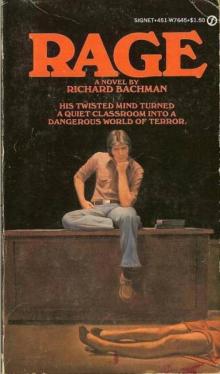 Rage (richard bachman)
Rage (richard bachman)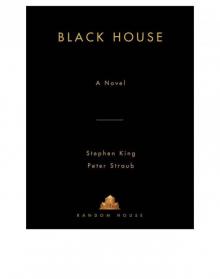 Black House js-2
Black House js-2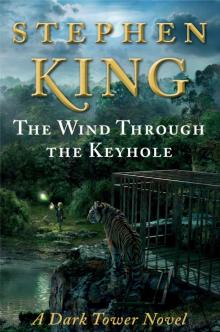 The Wind Through the Keyhole (Dark Tower)
The Wind Through the Keyhole (Dark Tower)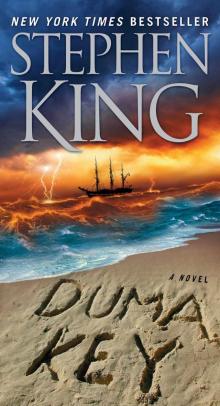 Duma Key: A Novel
Duma Key: A Novel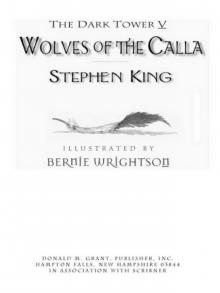 Dark Tower V, The
Dark Tower V, The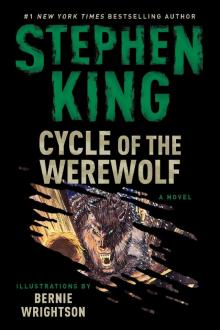 Cycle of the Werewolf
Cycle of the Werewolf AUTOPSY ROOM FOUR
AUTOPSY ROOM FOUR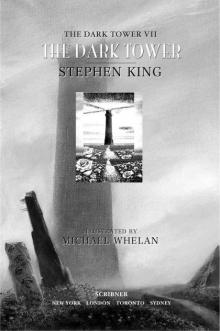 Dark Tower VII, The (v. 7)
Dark Tower VII, The (v. 7) Gramma
Gramma Suffer the Little Children
Suffer the Little Children Chinga
Chinga Word Processor of the Gods
Word Processor of the Gods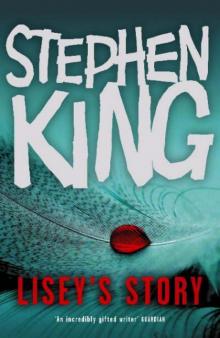 Lisey’sStory
Lisey’sStory Dark Tower V (Prologue)
Dark Tower V (Prologue)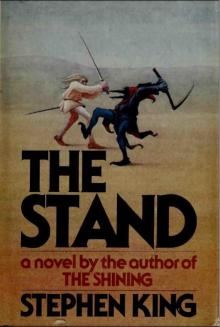 The Stand (Original Edition)
The Stand (Original Edition)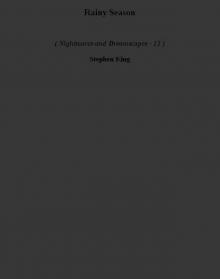 Rainy Season nad-13
Rainy Season nad-13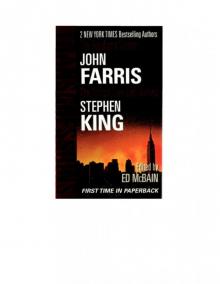 Transgressions
Transgressions The Plant
The Plant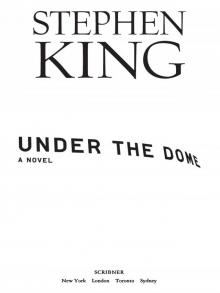 Under the Dome: A Novel
Under the Dome: A Novel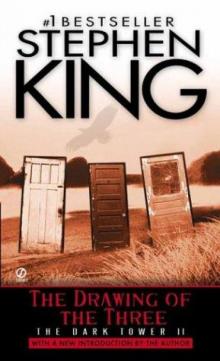 The Dark Tower II: The Drawing of the Three
The Dark Tower II: The Drawing of the Three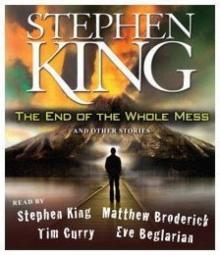 The End of the Whole Mess:
The End of the Whole Mess: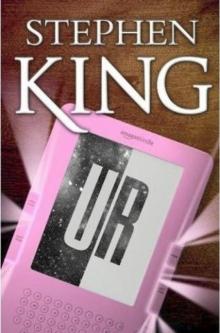 Ur
Ur The Body
The Body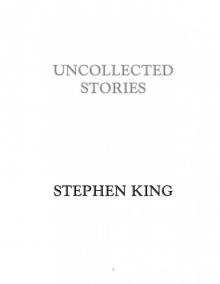 Uncollected Stories 2003
Uncollected Stories 2003 Chattery Teeth
Chattery Teeth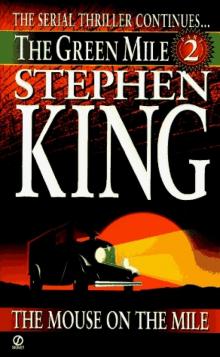 The Mouse on the Mile
The Mouse on the Mile The Cat from Hell
The Cat from Hell![The Drawing of the Three [The Dark Tower II] Read online](http://i1.bookreadfree.com/i/03/25/the_drawing_of_the_three_the_dark_tower_ii_preview.jpg) The Drawing of the Three [The Dark Tower II]
The Drawing of the Three [The Dark Tower II]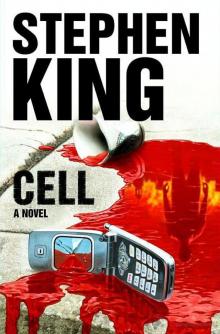 Cell: A Novel
Cell: A Novel Uncle Otto's Truck
Uncle Otto's Truck Song of Susannah dt-6
Song of Susannah dt-6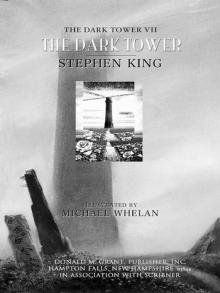 The Dark Tower VII
The Dark Tower VII Head Down
Head Down Sneakers
Sneakers Crouch End
Crouch End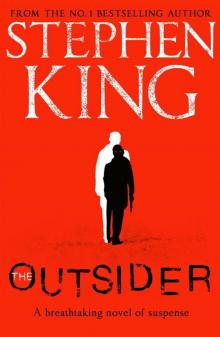 Outsider
Outsider End of Watch: A Novel (The Bill Hodges Trilogy Book 3)
End of Watch: A Novel (The Bill Hodges Trilogy Book 3)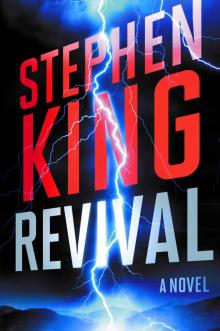 Revival: A Novel
Revival: A Novel Everything's Eventual skssc-4
Everything's Eventual skssc-4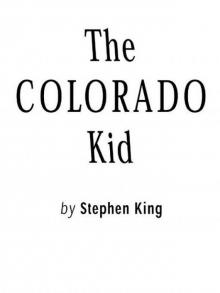 The Colorado Kid
The Colorado Kid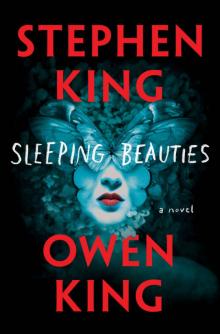 Sleeping Beauties: A Novel
Sleeping Beauties: A Novel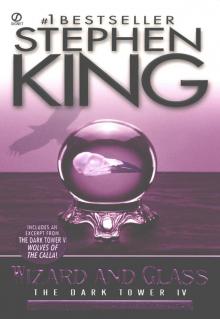 The Dark Tower IV Wizard and Glass
The Dark Tower IV Wizard and Glass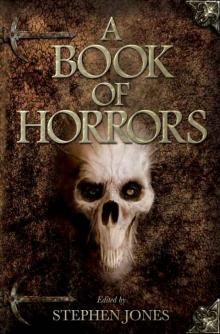 A Book of Horrors
A Book of Horrors Four Past Midnight - 3 - Secret Window, Secret Garden
Four Past Midnight - 3 - Secret Window, Secret Garden The House on Maple Street
The House on Maple Street Sometimes They Come Back
Sometimes They Come Back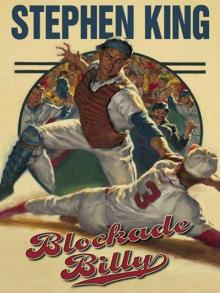 Blockade Billy
Blockade Billy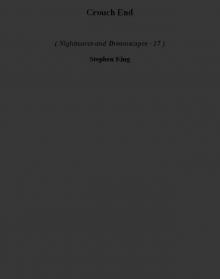 Crouch End nad-17
Crouch End nad-17 Lunch at the Gotham Cafe
Lunch at the Gotham Cafe The Waste Lands dt-3
The Waste Lands dt-3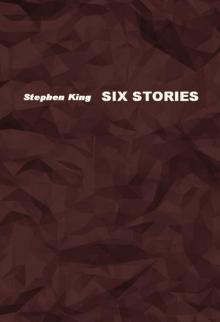 Six Stories
Six Stories A Face in the Crowd
A Face in the Crowd Case
Case Four Past Midnight - 2 - The Langoliers
Four Past Midnight - 2 - The Langoliers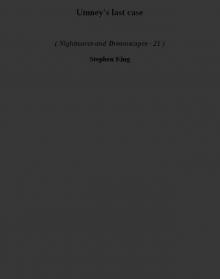 Umney's last case nad-21
Umney's last case nad-21 Survivor Type
Survivor Type Guns (Kindle Single)
Guns (Kindle Single) You Know They Got a Hell of a Band
You Know They Got a Hell of a Band The Jaunt
The Jaunt In A Half World Of Terror
In A Half World Of Terror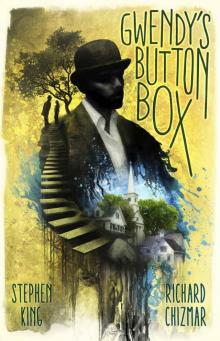 Gwendy's Button Box
Gwendy's Button Box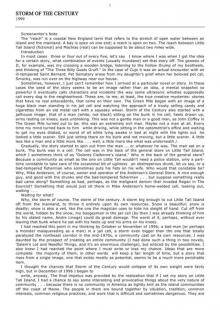 Storm of the Century
Storm of the Century The Jaunt. Travel
The Jaunt. Travel Roadwork
Roadwork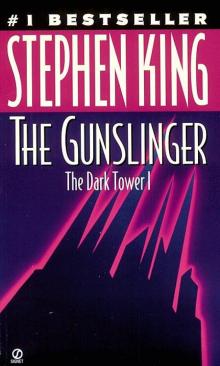 Darktower 1 - The Gunslinger
Darktower 1 - The Gunslinger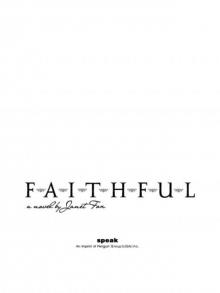 Faithful
Faithful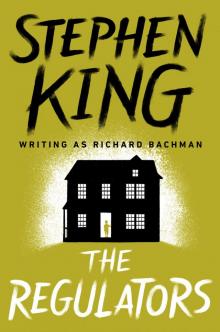 The Regulators
The Regulators A Bedroom in the Wee Hours of the Morning
A Bedroom in the Wee Hours of the Morning Graveyard Shift
Graveyard Shift The Monkey
The Monkey Children of the Corn
Children of the Corn The Reploids
The Reploids 1922
1922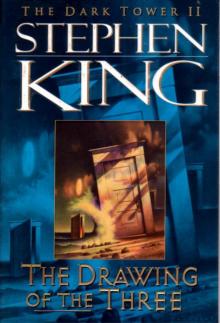 Darktower 2 - The Drawing of the Three
Darktower 2 - The Drawing of the Three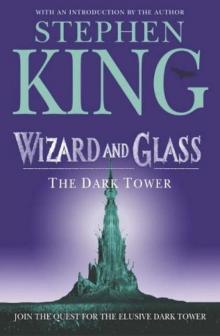 Wizard and Glass dt-4
Wizard and Glass dt-4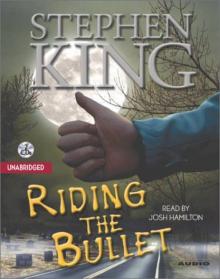 Riding The Bullet
Riding The Bullet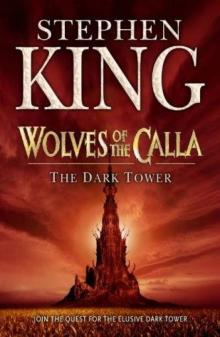 Wolves of the Calla dt-5
Wolves of the Calla dt-5 L.T.'S Theory Of Pets
L.T.'S Theory Of Pets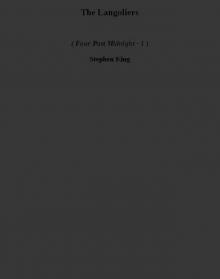 The Langoliers fpm-1
The Langoliers fpm-1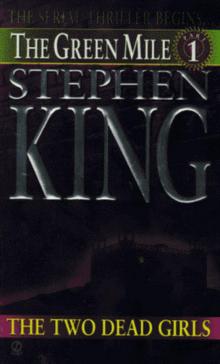 The Two Dead Girls
The Two Dead Girls The Blue Air Compressor
The Blue Air Compressor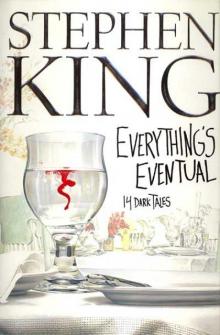 Everything's Eventual
Everything's Eventual You, Human: An Anthology of Dark Science Fiction
You, Human: An Anthology of Dark Science Fiction The Night of The Tiger
The Night of The Tiger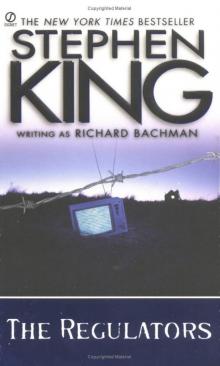 The Regulators (richard bachman)
The Regulators (richard bachman)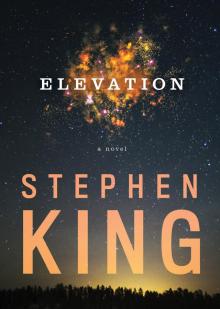 Elevation
Elevation The Road Virus Heads North
The Road Virus Heads North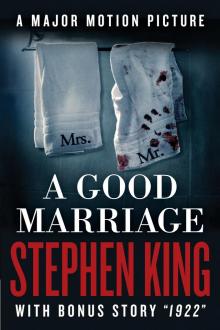 Good Marriage
Good Marriage Four Past Midnight - 5 - The Library Policeman
Four Past Midnight - 5 - The Library Policeman Grey Matter
Grey Matter Herman Wouk Is Still Alive
Herman Wouk Is Still Alive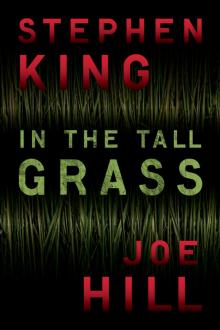 In the Tall Grass
In the Tall Grass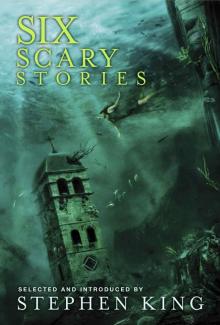 Six Scary Stories
Six Scary Stories Foreward
Foreward The Crate
The Crate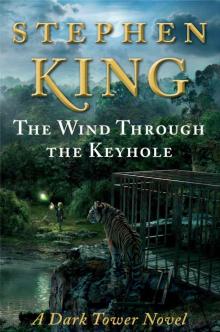 The wind through the keyhole adt-8
The wind through the keyhole adt-8 King, Stephen - Battleground
King, Stephen - Battleground The Wedding Gig
The Wedding Gig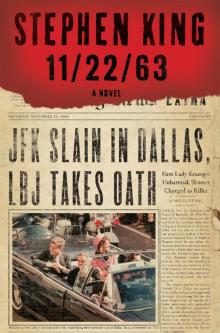 11/22/63: A Novel
11/22/63: A Novel The Long Walk
The Long Walk